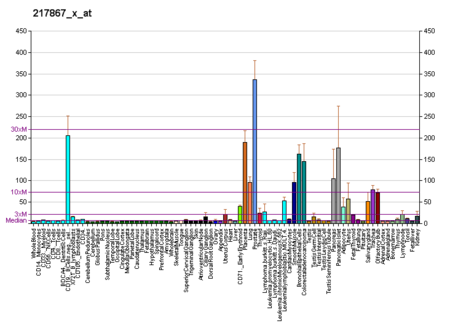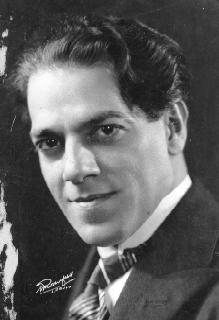Bulgarian pronouns
| |||||||||||||||||||||||||||||||||||||||||||||||||||||||||||||||||||||||||||||||||||||||||||||||||||||||||||||||||||||||||||||||||||||||||||||||||||||||||||||||||||||||||||||||||||||||||||||||||||||||||||||||||||||||||||||||||||||||||||||||||||||||||||||||||||||||||||||||||||||||||||||||||||||||||||||||||||||||||||||||||||||||||||||||||||||||||||||||||||||||||||||||||||||||||||||||||||||||||||||||||||||||||||||||||||||||||||||||||||||||||||||||||||
Read other articles:

Enzyme found in humans BACE2Available structuresPDBOrtholog search: PDBe RCSB List of PDB id codes2EWY, 3ZKG, 3ZKI, 3ZKM, 3ZKN, 3ZKQ, 3ZKS, 3ZKX, 3ZL7, 3ZLQ, 4BEL, 4BFBIdentifiersAliasesBACE2, AEPLC, ALP56, ASP1, ASP21, BAE2, CDA13, CEAP1, DRAP, beta-site APP-cleaving enzyme 2, beta-secretase 2External IDsOMIM: 605668 MGI: 1860440 HomoloGene: 22696 GeneCards: BACE2 Gene location (Human)Chr.Chromosome 21 (human)[1]Band21q22.2-q22.3Start41,167,801 bp[1]End41,282,530 bp[1]Ge…

WFS1 المعرفات الأسماء المستعارة WFS1, CTRCT41, WFRS, WFS, WFSL, wolframin ER transmembrane glycoprotein معرفات خارجية الوراثة المندلية البشرية عبر الإنترنت 606201 MGI: MGI:1328355 HomoloGene: 4380 GeneCards: 7466 علم الوجود الجيني الوظيفة الجزيئية • ATPase binding• GO:0001948، GO:0016582 ربط بروتيني• ubiquitin protein ligase binding• calcium-dependent protein binding• cal…

Pour les articles homonymes, voir Fontaine. Nicole Fontaine Nicole Fontaine en 2002. Fonctions Députée européenne 20 juillet 2004 – 13 juillet 2009(4 ans, 11 mois et 23 jours) Législature 6e 24 juillet 1984 – 16 juin 2002(17 ans, 10 mois et 23 jours) Législature 2e, 3e, 4e et 5e Successeur Fabienne Keller Ministre déléguée à l'Industrie 17 juin 2002 – 30 mars 2004(1 an, 10 mois et 13 jours) Président Jacques Chirac Gouvernement Jean-Pi…

此條目可参照英語維基百科相應條目来扩充。 (2021年5月6日)若您熟悉来源语言和主题,请协助参考外语维基百科扩充条目。请勿直接提交机械翻译,也不要翻译不可靠、低品质内容。依版权协议,译文需在编辑摘要注明来源,或于讨论页顶部标记{{Translated page}}标签。 约翰斯顿环礁Kalama Atoll 美國本土外小島嶼 Johnston Atoll 旗幟颂歌:《星條旗》The Star-Spangled Banner約翰斯頓環礁地�…

Battle between Palmyrene and Roman armies (272) 34°43′N 36°43′E / 34.72°N 36.71°E / 34.72; 36.71 Battle of EmesaPart of The Crisis of the Third CenturyDate272 CELocationEmesa, SyriaResult Roman victory Collapse of the Palmyrene Empire.Belligerents Roman Empire Palmyrene EmpireCommanders and leaders Emperor Aurelian Empress ZenobiaZabdasStrength 180,000Engaged:60,000 infantry5,000 cavalry(According to Zosimus) 70,000Casualties and losses Unknown, probably light Hea…

Sorbitol Nama Nama IUPAC (2S,3R,4R,5R)-Hexane-1,2,3,4,5,6-hexol Nama lain D-glucitol; L-Sorbitol; Sorbogem; Sorbo Penanda Nomor CAS 50-70-4 Y Model 3D (JSmol) Gambar interaktif 3DMet {{{3DMet}}} ChEBI CHEBI:17924 N ChEMBL ChEMBL1682 N ChemSpider 5576 N DrugBank DB01638 Y Nomor EC MeSH Sorbitol PubChem CID 5780 Nomor RTECS {{{value}}} UNII 506T60A25R Y CompTox Dashboard (EPA) DTXSID5023588 InChI InChI=1S/C6H14O6/c7-1-3(9)5(11)6(12)4(10)2-8/h3-12H,1-2H2/t3-,4+,5-,6-/m…

هوغو سوزا معلومات شخصية الميلاد 31 يناير 1999 (العمر 25 سنة)دوق دي كاكسياس الطول 1.98 م (6 قدم 6 بوصة) مركز اللعب حارس مرمى الجنسية البرازيل معلومات النادي النادي الحالي فلامنغو الرقم 45 مسيرة الشباب سنوات فريق 2014–2019 فلامنغو المسيرة الاحترافية1 سنوات فريق م. (هـ.) 2018�…

Ammonium perchlorate Names IUPAC name Ammonium perchlorate Other names AP Identifiers CAS Number 7790-98-9 Y 3D model (JSmol) Interactive image ChemSpider 23041 Y ECHA InfoCard 100.029.305 EC Number 232-235-1 PubChem CID 24639 RTECS number SC7520000 UNII Z3DQ8VD57X UN number 1442 CompTox Dashboard (EPA) DTXSID4024515 InChI InChI=1S/ClHO4.H3N/c2-1(3,4)5;/h(H,2,3,4,5);1H3 YKey: HHEFNVCDPLQQTP-UHFFFAOYSA-N YInChI=1/ClHO4.H3N/c2-1(3,4)5;/h(H,2,3,4,5);1H3Key: HHEFNVCDPLQ…

Sports radio network Infinity Sports NetworkTypeSports radio networkCountryUnited StatesOwnershipOwnerAudacy, Inc. (producer)Westwood One (distributor)Key peopleMark Chernoff(director of programming)Chris Oliviero(EVP of programming)[1]HistoryLaunch dateJanuary 2, 2013(Full programming)LinksWebcastListen live (via Audacy)Websitewww.audacy.com/stations/infinitysportsnetwork Infinity Sports Network is an American sports radio network. It debuted as CBS Sports Radio with hourly sports …

Heitor Villa-Lobos This is a list of compositions by the Brazilian composer Heitor Villa-Lobos. It is still incomplete (he composed over 2000 works in his lifetime), and needs expansion. You can help. (More nearly complete lists of compositions may be found in the References or External Links listed below). Chôros The Chôros are listed and described in Villa-Lobos, sua obra 1974, Appleby 1988, Peppercorn 1991a, Tarasti 1995, and Wright 1992. Introdução aos Chôros (Introduction to the Chôro…

Federal courthouse in Ohio, United StatesCarl B. Stokes U.S. CourthouseView of the courthouse from the Terminal Tower observation deckGeneral informationStatusCompletedTypeFederal courthouseArchitectural stylePostmodernAddress801 W. Superior Ave.Town or cityCleveland, OhioCountryUnited StatesCoordinates41°29′47″N 81°41′51″W / 41.496428°N 81.697458°W / 41.496428; -81.697458GroundbreakingMay 28, 1997Construction started1999Completed2002LandlordGeneral Services A…

French sociologist and engineer Frédéric le PlayGOLHBornPierre Guillaume Frédéric le Play(1806-04-11)11 April 1806La Rivière-Saint-Sauveur, French EmpireDied5 April 1882(1882-04-05) (aged 75)Paris, FranceAcademic careerInstitutionÉcole Polytechnique, Écoles des minesFieldEconomics, political economy, sociology, epistemology, engineeringSchool ortraditionCounter-EnlightenmentOther notable studentsRené de La Tour du Pin · Albert de Mun · Louis Dimier · Edmond Demolins · Fréd…

Spanish conquistador For the 17th-century historian, see Gil González Dávila (historian). Drawing of Gil Gonzalez Davila Gil González Dávila or Gil González de Ávila (b. 1480 – 21 April 1526) was a Spanish conquistador and the first European to explore present-day Nicaragua. Early career González Dávila first appears in historical records in 1508, when he received a royal commission to examine accounts and tax records of estates. He probably traveled soon afterward to Santo Domingo for…

Line of longitude, at which longitude is defined to be 0° Prime Meridian redirects here. For Earth's prime meridian, often called the Prime Meridian, see IERS Reference Meridian. For the historical meridian it is based on, see Prime meridian (Greenwich). 0°class=notpageimage| Modern IERS Reference Meridian on Earth A prime meridian is an arbitrarily-chosen meridian (a line of longitude) in a geographic coordinate system at which longitude is defined to be 0°. Together, a prime meridian and it…

Not buying goods or services from far away This article needs additional citations for verification. Please help improve this article by adding citations to reliable sources. Unsourced material may be challenged and removed.Find sources: Local purchasing – news · newspapers · books · scholar · JSTOR (September 2007) (Learn how and when to remove this message) An American 'Buy Fresh, Buy Local' exhibitor Local purchasing is a preference to buy locally prod…

Pingai-duri Prunella Dunnock (Prunella modularis)TaksonomiDivisiManiraptoriformesKelasAvesOrdoPasseriformesFamiliPrunellidaeGenusPrunella Vieillot, 1816 Tata namaSinonim taksonLaiscopusSpeciesSee text. Pingai-duri adalah genus burung dalam keluarga Prunellidae, yang endemik di Dunia Lama .[1] Kelompok kecil burung pengicau yang berkerabat dekat ini semuanya termasuk dalam genus Prunella . Semua kecuali pingai-duri berisik dan pingai duri Jepang adalah penghuni daerah pegunungan di Eropa …

بينجامين ميندي (بالفرنسية: Benjamin Mendy) معلومات شخصية الاسم الكامل بينجامين ميندي الميلاد 17 يوليو 1994 (العمر 29 سنة)[1]مانشستر، إنجلترا الطول 1.85 م (6 قدم 1 بوصة) مركز اللعب مدافع الجنسية فرنسا السنغال الديانة الإسلام[2] معلومات النادي النادي الحالي لور�…

American politician Frank DenholmMember of the U.S. House of Representativesfrom South Dakota's 1st districtIn officeJanuary 3, 1971 – January 3, 1975Preceded byBen Lone Feather ReifelSucceeded byLarry Pressler Personal detailsBornFranklin Edvard Denholm(1923-11-29)November 29, 1923Day County, South Dakota, U.S.DiedApril 7, 2016(2016-04-07) (aged 92)Brookings, South Dakota, U.S.Political partyDemocraticAlma materSouth Dakota State UniversityUniversity of South DakotaU…

Canadian physicist (1929-2018) Richard TaylorCC FRS FRSCTaylor in 1967BornRichard Edward Taylor(1929-11-02)2 November 1929Medicine Hat, Alberta, CanadaDied22 February 2018(2018-02-22) (aged 88)Stanford, California, U.S.Alma mater University of Alberta (BSc, MSc) Stanford University (PhD) Awards Nobel Prize in Physics (1990) FRS (1997)[1] Scientific careerFieldsParticle physicsInstitutions Stanford Linear Accelerator Center Lawrence Berkeley Laboratory École Normale Sup…

Disambiguazione – Se stai cercando l'omonima squadra degli anni ottanta, vedi KAS-Canal 10. KASCiclismo Domingo Perurena in maglia KAS (1973)InformazioniNazione Spagna Debutto1958 Scioglimento1979 SpecialitàStrada Manuale La KAS era una squadra maschile spagnola di ciclismo su strada, attiva nel professionismo tra il 1958 e il 1979. Nata per volontà di Luis Goicoechea e Dalmacio Langarica, fu sponsorizzata per ventidue anni consecutivi dalla fabbrica di bibite KAS, dando vita a uno dei …